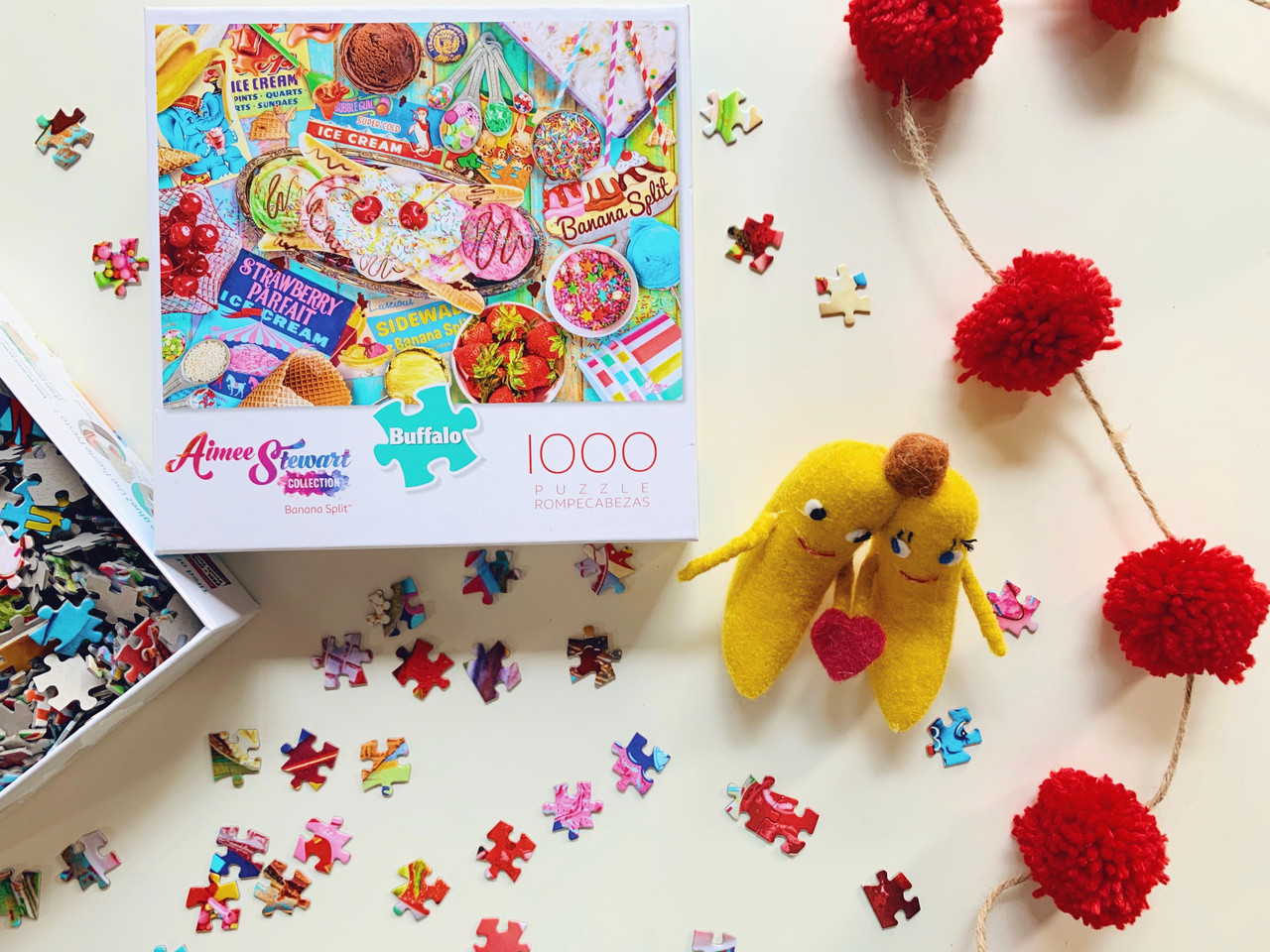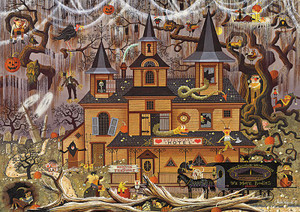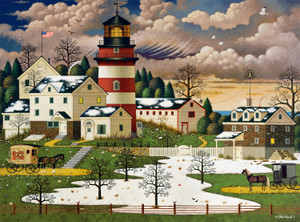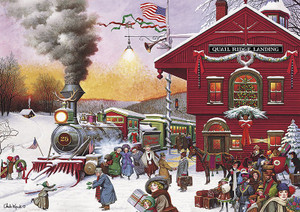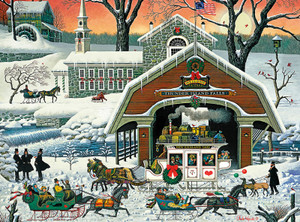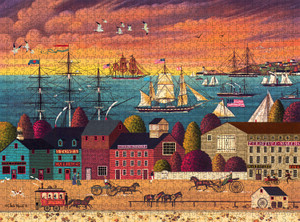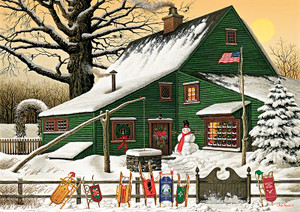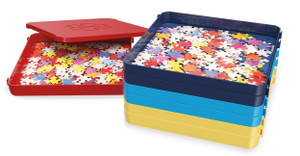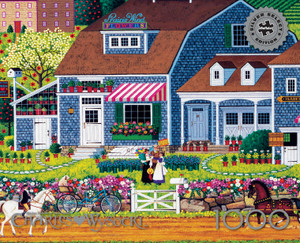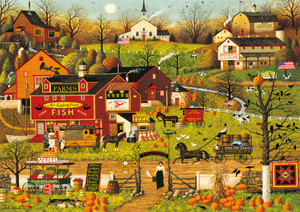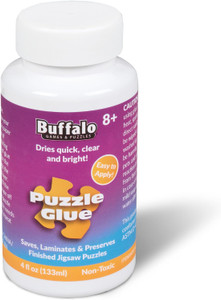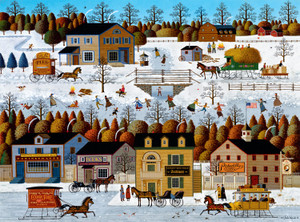Posted by Buffalo Games on Jun 1st 2022
How Many Edge Pieces Are in a 1000-Piece Puzzle?
Trailblazing questions from the leading edge of all things puzzling are our specialty. We know it’s the question you didn’t know you were dying to ask until we asked it, but hey, that’s what we do around here. So how many edge pieces are in a 1000-piece puzzle?
Before we get down to brass tacks and answer that question (with what you no doubt have already deduced will involve the words “that” and “depends”), we would like to give you a little background on why such a question matters. Really, it is the stuff of legend, and whole nations could rise and fall on the outcome.
Okay not really, but we think puzzles are cool, and that’s all.
Jigsaw Puzzles: A Quick History
Come back with us to the 1760s, when a man named John Spilsbury had the brainwave that he could teach geography to children with a hands-on method using what he called his “dissected maps.” Jigsaw puzzles were born.
Fast forward to the late 1800s, when cardboard jigsaw puzzles first debuted. They didn’t really catch on until the Great Depression, when people needed an inexpensive, reusable entertainment option.
Since then, jigsaw puzzles for adults have become ever more challenging. Today, the puzzle and game industry is enormous, having accrued $3.34 billion in sales for 2021.
In other words, people love puzzling today more than ever. But crucially, have the edge pieces, however many there are, always been the edge pieces?
It’s Not Always that Straightforward
You might think that jigsaw puzzles have always had edge pieces that are really obvious by virtue of their straight lines. But puzzle makers have been throwing curveballs at puzzlers for hundreds of years now.
Back in the day, when puzzles were made from lithographed plywood, puzzle makers had the devious idea of cutting straight lines not just around the edges but right through the middle of the field pieces. Can you imagine trying to solve a puzzle that had field pieces that looked like edge pieces? Talk about a challenge.
And that’s not all. Some of those devious puzzle makers became downright devilish when they had this idea: what if the lines of the puzzle followed the lines in the image? Depending on what you were trying to solve, there was no telling what you were getting into. A jigsaw puzzle like that is just about as close to impossible to solve as possible.
Let’s Give Thanks for the Edge Pieces
When an edge piece is an edge piece and not a sneaky, underhanded, dodgy field piece with a straight edge, there is much rejoicing. And of course, there are variables at play. How many edge pieces does a 1000-piece puzzle have? You probably saw this coming:
That depends. (We warned you.)
To answer that question satisfactorily, we need to bust out the middle school mathematics. Or maybe it was elementary school math. That probably depends too, now that we think of it.
Jigsaw Puzzles Are Cut in Parallel Grids
No matter how many pieces your 1000-piece puzzle actually has, the cuts are laid out in a grid with parallel lines that feature the same number of pieces on each opposing side. If a puzzle were a square (and few are), it would have about 30 pieces per side because 30 x 30 = 900. And that brings up a great opportunity for another subheading.
1000-Piece Jigsaw Puzzles Often Lie
Depending on their aspect ratio, 1000-piece puzzles don’t actually have 1000 pieces. This is because of the pertinacious, inflexible, iron-willed, uncompromising, uncooperative, unaccommodating, intractable, unbending, unyielding nature of mathematics in general. No, it’s not frustrating. Why would you ask that?
The thing is, if you have x number of pieces on one side of a rectangle, it’s not negotiable how many pieces will be on the opposite side. It must be x. And if on one of the other two sides you have y number of pieces, you must also have y number of pieces on its opposite side.
Therefore, not all 1000-piece jigsaw puzzles have 1000 pieces. There is a significant amount of rounding going on, people.
Let’s take the above example of the square because it’s easy to understand. A square 1000-piece puzzle would max out at 31 pieces on all four sides because:
- 30 x 30 = 900
- 31 x 31 = 961
- 32 x 32 = 1,024
But if a puzzle maker is okay giving you 24 bonus pieces, hey, who are we to stop them?
Those Dadgum Edge Pieces
Let’s assume we’ve graduated from squares, which don’t often occur in puzzle making, and we’re now working on rectangular puzzles.
There’s a classical design ideal called “the golden section” that has been used in everything from art to architecture for centuries. The theory is that the golden section’s width-to-height ratio is somehow the most pleasing to the eye. This ratio is 1:1.6, or, if an object measures 10 units on its short axis, it should measure 16 units on its long axis.
Interestingly, a rectangular 1000-piece puzzle configured as close as possible to a ratio of 1:1.6 (the golden section ratio) would have 25 pieces on its short side, 40 pieces on its long side, and exactly 1000 pieces in total. Isn’t that magical?
Even better, such a puzzle would have exactly 40 x 2 + 25 x 2 edge pieces, or 130.
However, that infamous square puzzle would have:
- 30 pieces per side = 120 edge pieces
- 31 pieces per side = 124 edge pieces
- 32 pieces per side = 128 edge pieces
How weird is it that a square puzzle with 1,024 total pieces has 2 fewer edge pieces than a rectangular puzzle with 1000 pieces? We’ll probably send that mystery off to the X-Files. We preferred reading in school.
Finally
We’ve answered the edge piece question. We don’t know about you, but we find it rather fascinating. Not fascinating enough to figure out how many pieces would be in one of those circular 1000-piece puzzles, but fascinating.
Now, why do we want pie?
